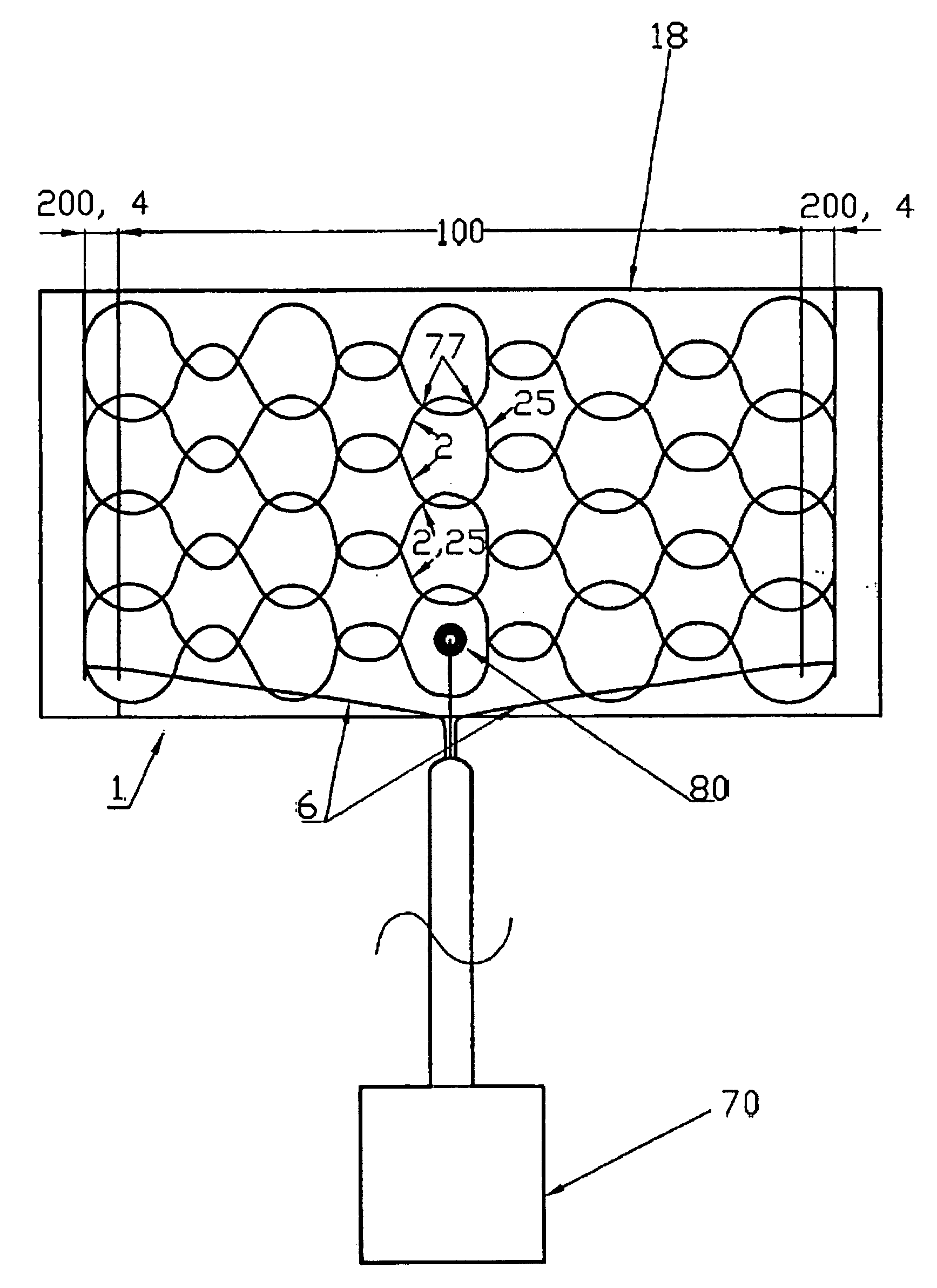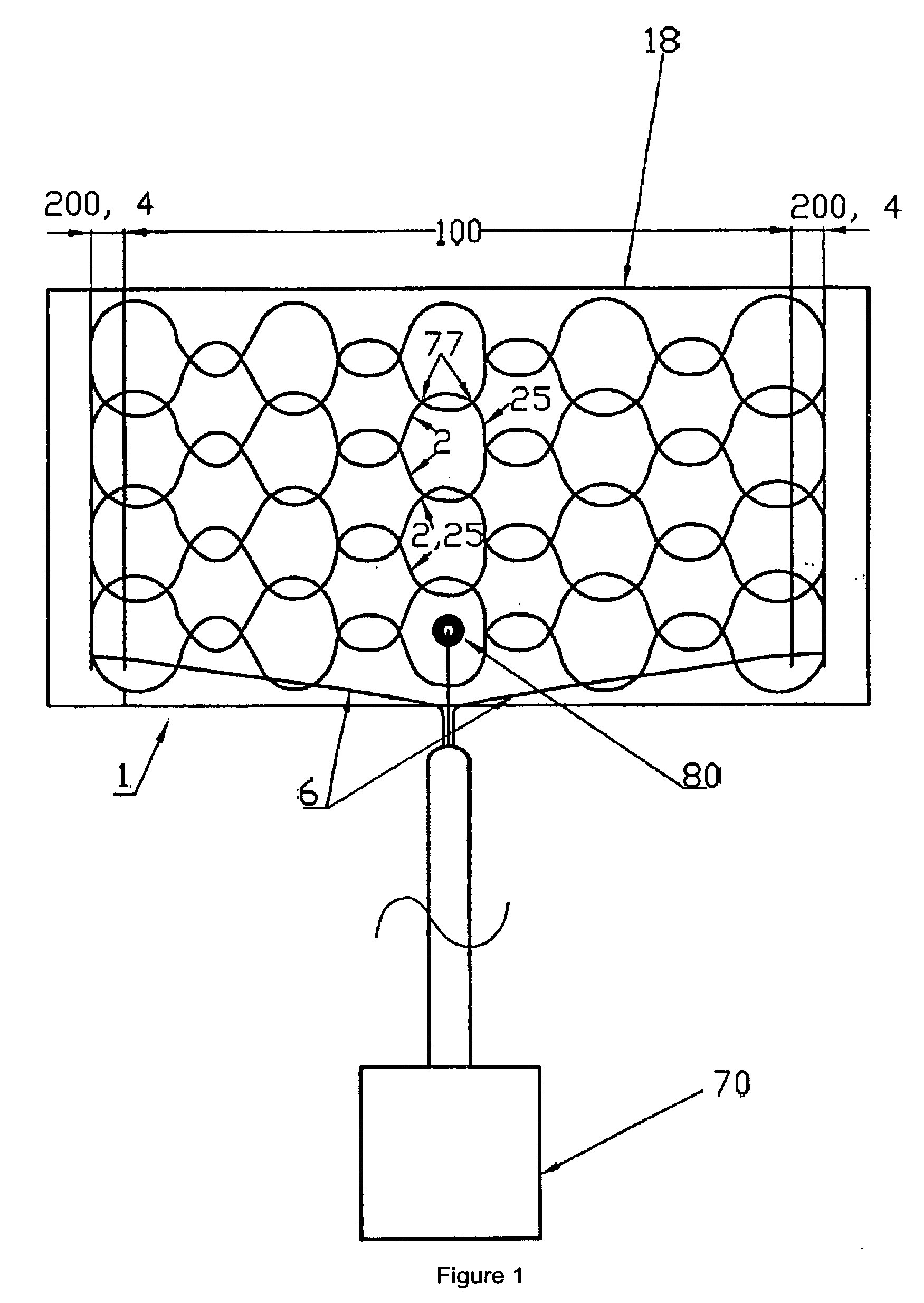Flat heating element
a technology for heating elements and flats, applied in the field of flat heating elements, can solve the problems of very little possibility of a contact conductor to yield to a load, and achieve the effects of increasing the probability of a fractured contact conductor strand, significantly increasing the probability of fracture, and high failure probability
- Summary
- Abstract
- Description
- Claims
- Application Information
AI Technical Summary
Benefits of technology
Problems solved by technology
Method used
Image
Examples
Embodiment Construction
[0021]FIG. 1 shows a flat electric heating element 1 (“heating element 1”).
[0022]The heating element 1 features at least one flat heating resistor (18) (“heating resistor 18”).
[0023]It features at least one flat carrier 8 (“flat carrier 8”). It may be appropriate for at least one of the carriers 8 to consist at least partly of a textile, knitted fabric, woven fabric, nonwoven fabric, flexible thermoplastic, air-permeable material and / or foil. In the embodiment shown a carrier 8 is provided with a non-woven fabric made of man-made fibers.
[0024]According to the invention, the heating element 1 features at least one heating zone 100 (“heating zone 100”). This heating zone is associated with or forms a surface to be heated. It is largely identical to the heating resistor 18.
[0025]The heating resistor 18 features, in particular, at least one heating conductor 2 (“heating conductor 2”) that is arranged on and / or in the heating zone 100. It is preferred to configure a plurality of heating ...
PUM
 Login to View More
Login to View More Abstract
Description
Claims
Application Information
 Login to View More
Login to View More - R&D
- Intellectual Property
- Life Sciences
- Materials
- Tech Scout
- Unparalleled Data Quality
- Higher Quality Content
- 60% Fewer Hallucinations
Browse by: Latest US Patents, China's latest patents, Technical Efficacy Thesaurus, Application Domain, Technology Topic, Popular Technical Reports.
© 2025 PatSnap. All rights reserved.Legal|Privacy policy|Modern Slavery Act Transparency Statement|Sitemap|About US| Contact US: help@patsnap.com



